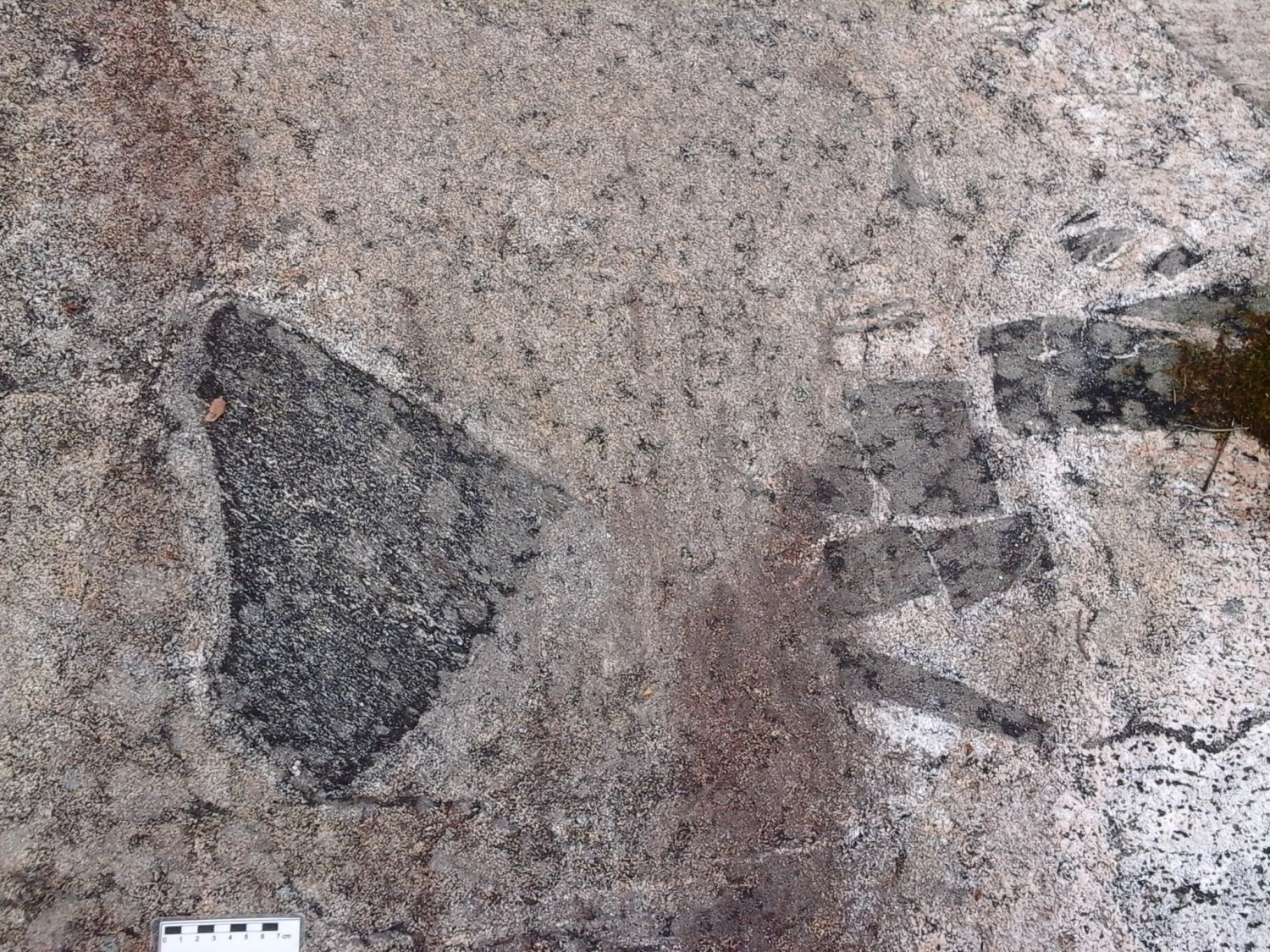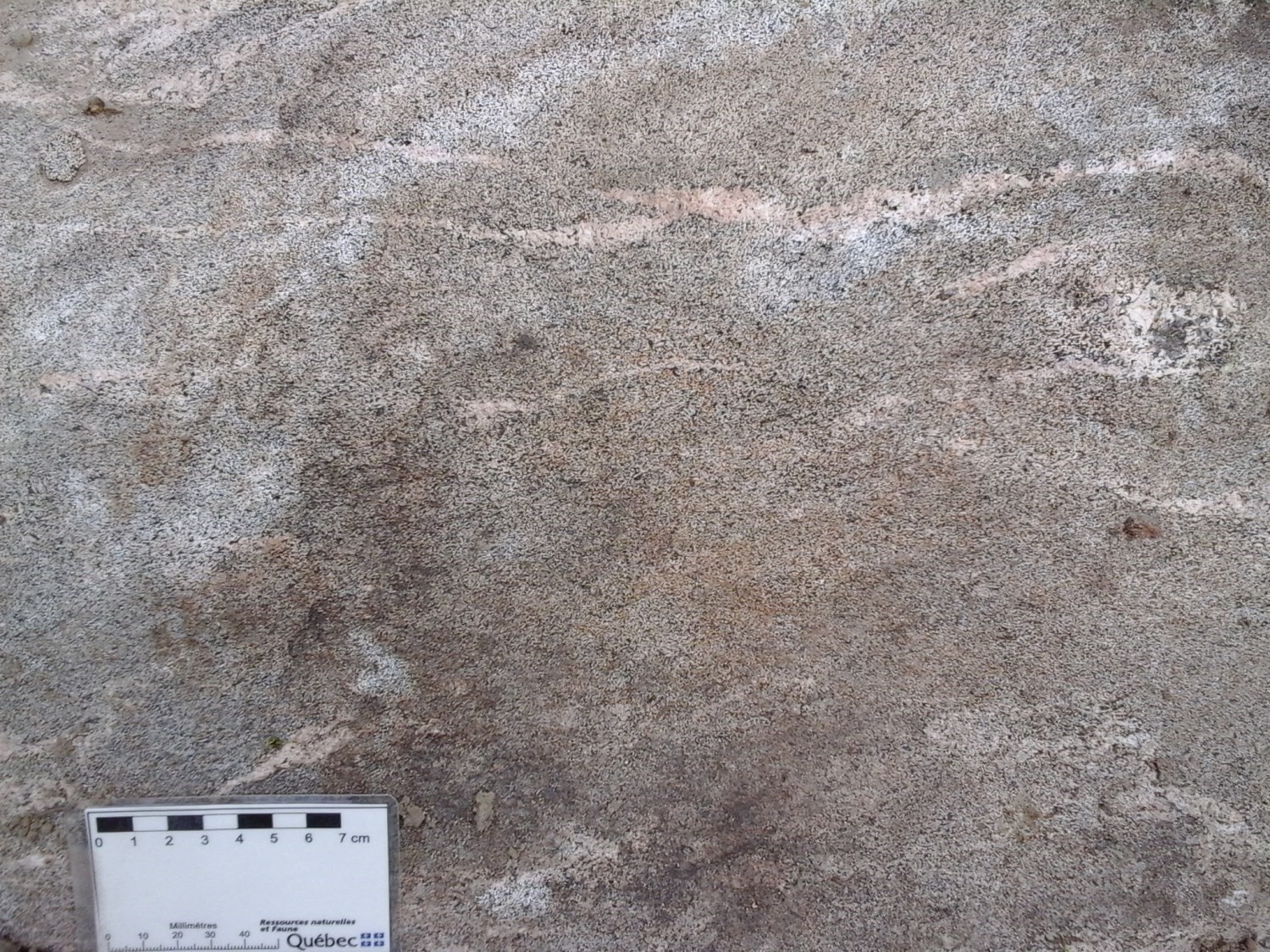
| Author: | Moukhsil and Côté, 2017 |
| Age: | Mesoproterozoic |
| Reference section: | Salmon-pink biotite-magnetite syenite outcrop (16-SJ-3080) |
| Type area: | NTS sheet 31P11 |
| Geological province: | Grenville Province |
| Geological subdivision: | Allochton |
| Lithology: | Intermediate, felsic and mafic intrusive rocks |
| Type: | Lithodemic |
| Rank: | Suite |
| Status: | Formal |
| Use: | Active |
None
Background
This unit was defined by Moukhsil and Côté (2017) during mapping of the Wemotaci area in Haut-Saint-Maurice.
Description
The Toad Intrusive Suite consists of two plutons and several small, easily identifiable intrusions on aeromagnetic maps. Rocks of this suite are of varying composition (syenite to gabbronorite) with contents of 40-77% SiO2, 1-7.3% K2O and Mg# (100*Mg/[Mg+Fe]) values reaching 74. On the chondrite-normalized rare earth element (REE) diagram (McDonough and Sun, 1995), profiles are characterized by light versus heavy REE enrichment (La/Lu = 5.144). This intrusion falls into the field of intraplate granites (Pearce et al., 1984) emplaced in an anorogenic context (Whalen et al., 1987).
 The biotite-magnetite granite is medium grained and foliated. Syenites contain varying amounts of quartz, K-feldspar with local nepheline. Fine-grained syenite is greyish to blackish in fresh exposure. Salmon-pink syenite intrusion cut grey syenite. The latter is rich in biotite (up to 15%), magnetic, massive (except in deformation zones) and has magmatic textures. Under the microscope, the two syenite facies contain K-feldspar, albite, magnetite, biotite, clinopyroxene, green horblende, apatite, zircon and traces of orthopyroxene. Microcline is the dominant K-feldspar. Locally, perthite and antiperthite are observed in feldspars. Plagioclase in grey syenite is typically sericitized.
The biotite-magnetite granite is medium grained and foliated. Syenites contain varying amounts of quartz, K-feldspar with local nepheline. Fine-grained syenite is greyish to blackish in fresh exposure. Salmon-pink syenite intrusion cut grey syenite. The latter is rich in biotite (up to 15%), magnetic, massive (except in deformation zones) and has magmatic textures. Under the microscope, the two syenite facies contain K-feldspar, albite, magnetite, biotite, clinopyroxene, green horblende, apatite, zircon and traces of orthopyroxene. Microcline is the dominant K-feldspar. Locally, perthite and antiperthite are observed in feldspars. Plagioclase in grey syenite is typically sericitized.
The salmon-pink K-felspar syenite is locally pegmatitic. The rock contains up to 2% biotite and a high proportion of microcline that has local zircon inclusions. The other syenitic facies are distinguished by the presence of minerals such as quartz (quartz syenite), orthopyroxene (orthopyroxene syenite) or nepheline (nepheline syenite).
Foid monzonite is greyish with pinkish spots (K-feldspar) in fresh exposure and altered surface. It mainly occurs as 20 to 50 cm enclaves in grey syenite. This facies contains up to 10% biotite, and titanite, apatite and zircon as accessory minerals. Monzonite is undersaturated in silica as demonstrated by the presence of olivine and nepheline in the norm.
Foid monzosyenite is medium-grained, greyish in fresh exposure and magnetic. It is composed of clinopyroxene, biotite, amphibole, K-feldspar, plagioclase and nepheline. Electron microprobe analyses indicate that sodic plagioclase (albite) is the main phase and contains orthopyroxene and K-feldspar inclusions; thus, this is an antiperthite. This rock also contains allanite (Ce type), calcite, apatite and biotite. These three minerals are associated with a LREE carbonate, parisite, in fractures. Parisite is enriched in Ce and has a total REE concentration 2.5 times higher than allanite. Carbonate ranges in size from <50 µm to 1 mm.
Gabbronorite is coarse grained, locally pegmatitic and cut by fine-grained grey syenite veins. It contains plagioclase, biotite, amphibole, orthopyroxene and clinopyroxene. Pyrite and chalcopyrite are observed here and there in the rock. The amphibole rims both types of pyroxene to form a coronitic texture.
Thickness and Distribution
The Toad Intrusive Suite consists of two intrusions and dykes. One intrusion is elliptical and has a N-S extension (12.6 km by 4.1 km), the other is circular (5.2 km in diameter).
Dating
None.
Stratigraphic Relationship(s)
The Toad Intrusive Suite intrudes into the Pope Plutonic Suite and Vermillon Plutonic Suite.
Paleontology
Does not apply.



